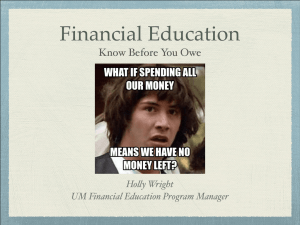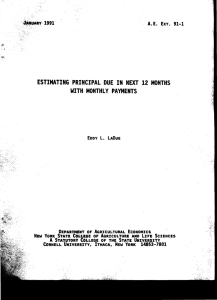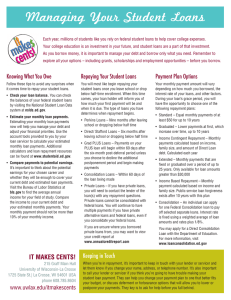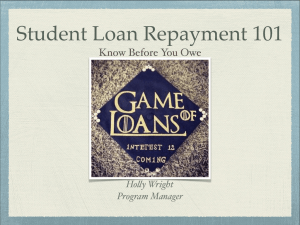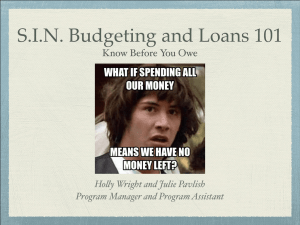Credit - econstem
advertisement
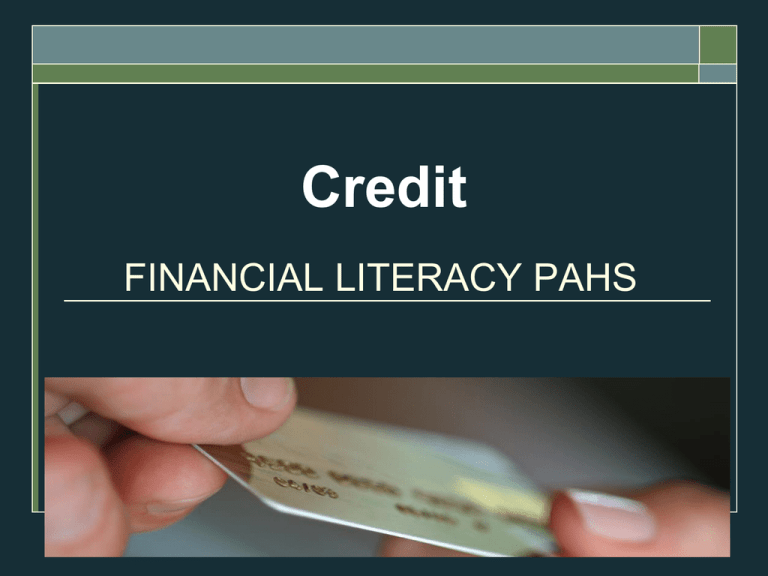
Credit FINANCIAL LITERACY PAHS Objectives Define what credit is Assess the cost of credit Describe the advantages of using credit Analyze the consequences of the misuse of credit Credit Vs. Good Credit Credit A legal agreement to receive cash, goods, or services now and pay for them in the future. Good Credit Good credit means you have the ability to borrow funds to buy things you would otherwise have to save for. Using Consumer Credit Wisely Consumer credit is a major force in the American economy. consumer credit use of credit for personal needs Using Consumer Credit Wisely What is a creditor? creditor an entity that lends money Using Consumer Credit Wisely Using credit increases the amount of money you can spend now, but the cost of credit decreases the amount of money you will have in the future. Section 1 What Is Consumer Credit? Types of Credit Closed-End Credit Open-End Credit open-end credit credit as a loan with a certain limit on the amount of money that can be borrowed for a variety of goods and services closed-end credit credit as a one-time loan that is paid back over a specified period of time in payments of equal amounts Types of Closed-End Credit Installment Loans Student Loans Installment Loan A loan in which the amount of payment and the number of payments are predetermined, such as an automobile loan or a personal Loan. Fixed payment Set period of time Set or varying interest rates Examples: Car loans and Home loan (mortgages) Student Loans Loans offered to students to assist in payment of the costs of professional education. These loans usually charger lower interest than other loans, and are also usually issued by the government. Allows a person to finance their education and defer payments until after graduation. Types of Open-End Credit Credit Cards Revolving Credit Credit Cards Plastic cards with electronic information that can be used by the holder to make purchases or obtain cash advances using a line of credit made available by the card-issuing financial institution. Revolving Credit A type of credit that does NOT have a fixed number of payments, such as a credit card or overdraft protection line of credit. No stated payoff time Limit to credit-line Minimum monthly payments Finance charges Example: credit card Factors to Consider Before Using Credit Advantages of Credit Disadvantages of Credit You enjoy goods and services now instead of later Credit costs money Combining several purchases while making one monthly payment Failure to pay your bills can ruin a good credit reputation A credit card is needed for transactions such as renting a car Failure to pay your bills can can lead to a loss of income and property Traveling with a credit card is safer than cash Good credit results in other lenders viewing you as a responsible person Using credit does not increase your total purchasing power You Task Complete the Types of Credit Worksheet Complete the types of loans worksheet






